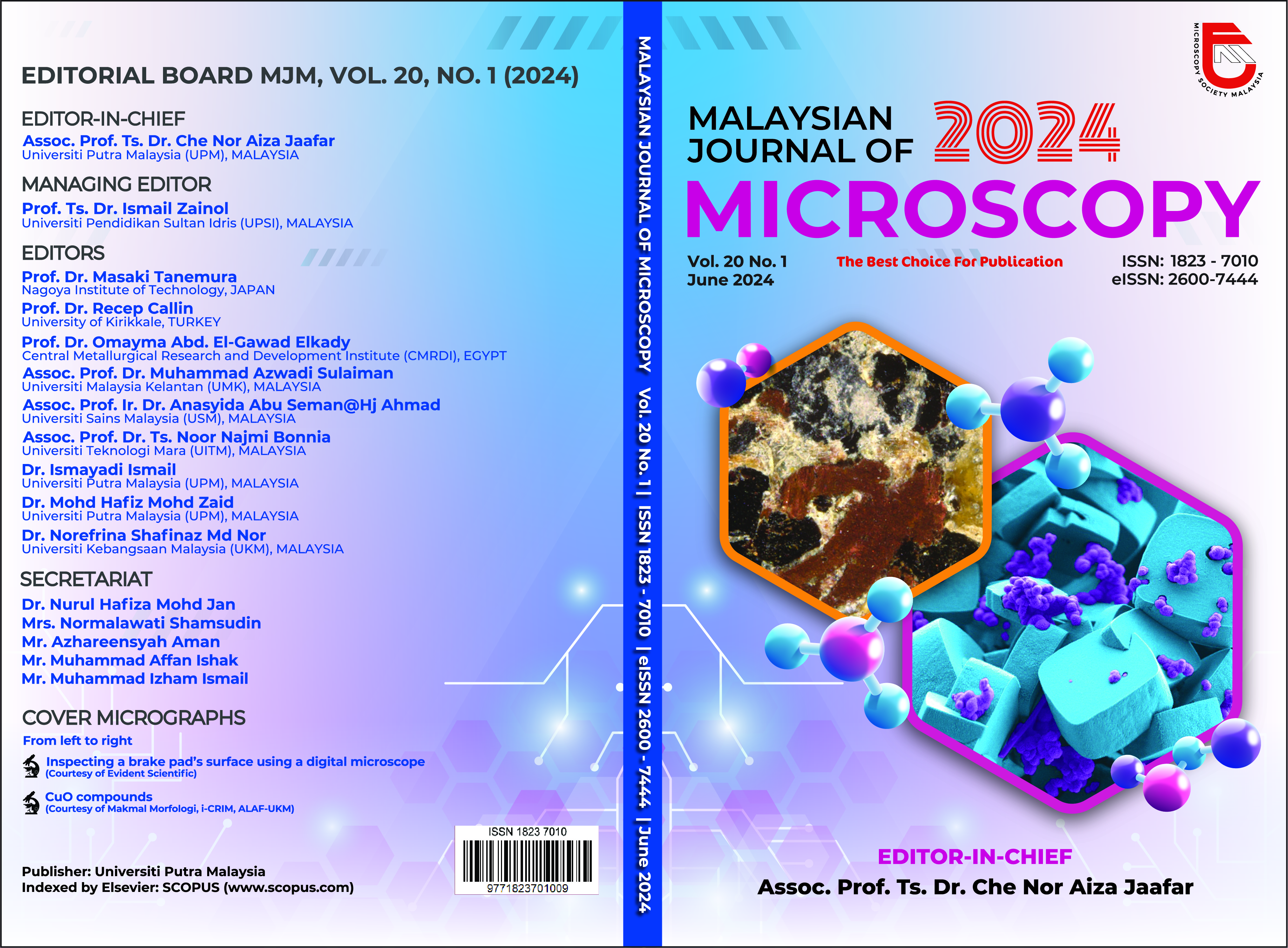MICROBIAL AEROSOL AND PARTICULATE MATTER (PM2.5) IN SELECTED UNIVERSITY ROOMSS
Abstract
The quality of indoors in university buildings is vital to ensure a conducive learning environment and health and well-being. The objectives of this study are to investigate microbial aerosols and the concentration of particulate matter (PM2.5) in a university building. The data was collected from three lecturers’ rooms (Room A, B and C). The microbial aerosol was collected using a microbial air sampler, while Total Bacterial Count (TBC) and Total Fungi Count (TFC) were counted to analyze the colony-forming unit. In addition, PM2.5 was obtained using a low-volume air sampler (LVS), for five hours. The Field-Emission Scanning Electron Microscope (FESEM) was used to analyze the morphological composition of indoor PM2.5. The findings indicated that Room A shows the highest concentration of TBC (251.43 ± 32.74 cfu m-3) and TFC (28.57 ± 2.65 cfu m-3) compared to the two other rooms. In addition, the TBC showed a significantly higher amount (p<0.05) compared to TFC, for all rooms studied. The average PM2.5 was 0.33 ± 0.15 μgm-3, and the highest level of PM2.5 was found in Room A (0.50 ± 0.01 μgm-3). Based on the FESEM image, it can be observed that the PM2.5 exhibits distinct variations in terms of their sizes and characteristics with morphologies ranging from rounded to polygonal with distinct geometric. Exposure to indoor air pollution in university buildings, as investigated in this study, revealed varying levels of microbial aerosols and particulate matter (PM2.5), emphasizing the importance of monitoring indoor air quality for potential health implications.


